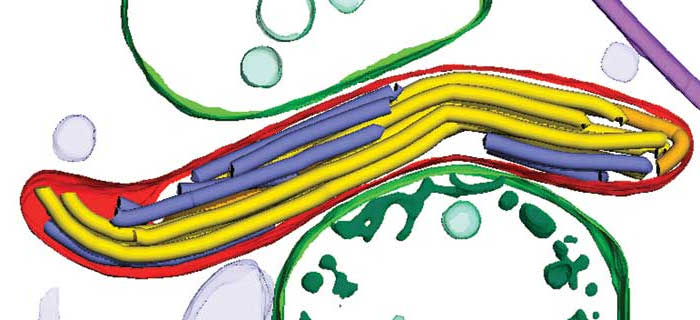Rosenthal group ::
Electron cryomicroscopy of protein complexes, viruses and cells
Our group studies the architecture of large protein assemblies in order to understand basic molecular mechanisms that control protein and membrane traffic in the cell and virus infection. We apply electron cryomicroscopy and image analysis to study the structure of purified protein complexes in frozen solution. We use electron cryotomography to directly image cells in a frozen-hydrated state providing high resolution images of cell architecture as well as structural information on protein complexes in vivo.
A major focus of the lab is the ultrastructure of viruses. We are interested in understanding how lipid-enveloped viruses such as influenza and retroviruses enter cells by membrane fusion and how new particles are assembled and released by budding through host membranes. As part of our studies of organelle formation and transformation, we build structural models for Weibel-Palade bodies, which are storage granules for the adhesive blood glycoprotein von Willebrand factor. We are working to improve experimental methods for high resolution imaging of proteins and to develop new computational procedures for image analysis. We are also interested in designing and imaging nanoscale assemblies with novel functions.
Single particle map of pyruvate dehydrogenase E2 enzyme ::

Structural model for a Weibel-Palade body containing von Willebrand factor tubules ::
